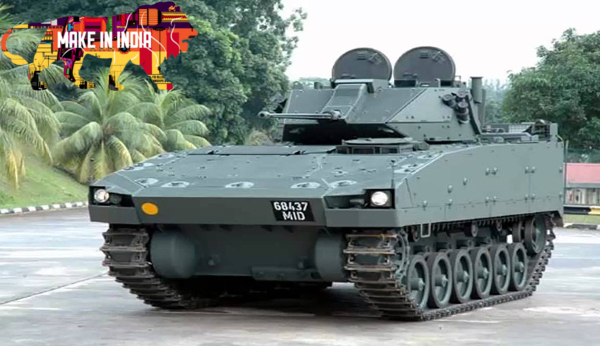India is planning to fast-track the induction of some 2600 Future Infantry Combat Vehicles (FICV) and a large number of automobile and engineering firms are in the race to grab a slice of the pie.
Among those vying for the new $8 billion market being opened by the Indian army are Mahindra & Mahindra, Titagarh Wagons, Tatas, DRDO and Reliance Defence and Engineering. The foreign Original Equipment Manufacturers who have also evinced interest in participating in the project include Russian firms under the umbrella of Rosoboronexport, US-based General Dynamic and Germany’s Rheinmetall.
Indian Army currently has some 49 Mechanised Infantry Battallions. According to former Major General SB Asthana, the vehicle will be used in all sectors that face a threat, including the crucial northern, western and eastern sectors that are threatened by Pakistan and China. “It will swim crossing water obstacles, move across country and will even operate in the valleys of Sikkim and Ladakh.”
Keeping in mind the need for speed, the FICVs are planned as fast-moving military automobile vehicles with the ability to not only cross difficult terrains, but also defend themselves against enemy fire and the flexibility to drop infantry sections in the middle of a war zone.
Armoured personnel carriers are meant to rapidly take troops to battlefields and are at the heart of an army doctrine called “Cold Start”, which aims to attack deep into the enemy territory and make a quick retreat. At present, India uses Soviet-designed BMP-1, BMP-2 and BTR-70 armoured personnel carriers. The mainstay has been BMP-2 Sarath manufactured by the Ordnance Factory Medak under a licence from Russia.
In the new era of conventional combined arms and peace-keeping operations, infantry combat vehicles have evolved into a real force-multiplier. FICV developments have come of age on the back of breakthrough in technologies and developments both in automobile as well as metallic industries.
However, the FICV project is stuck, as sources say the industry and the end-user, Army, have not been able to agree on common ground. While the Ministry of Defence expects up to 90 per cent of investment to develop the FICV prototypes to come from the private industry, sources reveal the industry is reluctant to invest heavily sans commitments from the Army.
Initial investment to develop two prototypes is estimated to be around Rs 800 crore, which the government wants the industry to bear. Industry on its part feels that globally, such developments are underwritten by the State.
Source: NIE
Image Courtesy: Bharath Niti
You may also like
-
IAF Aircraft Set Course For Exercise Eastern Bridge VII At Oman
-
IAF Set To Host The Indian Defence Aviation Exposition-II At Jodhpur
-
Defence Secretary to co-chair 5th India-Philippines Joint Defence Cooperation Committee meeting in Manila
-
Simultaneous Launch Of ‘malpe And Mulki’, Fourth And Fifth Ships Of Asw Swc (Csl) Project
-
Aatmanirbharta in Defence: MoD signs Contract with HAL for 240 AL-31FP Aero Engines for Su-30MKI Aircraft
